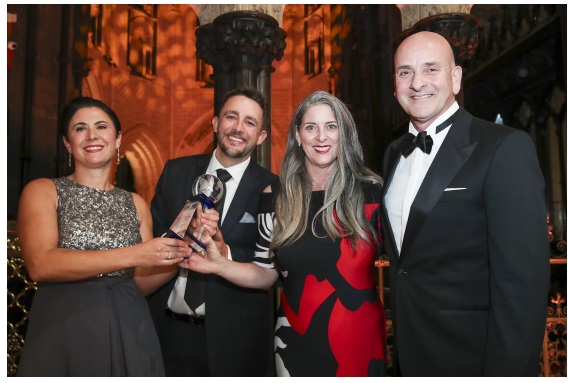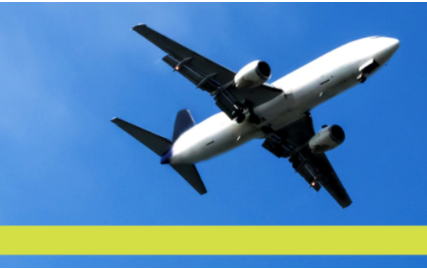Life beyond Covid for Asia Pacific’s Aviation industry: Think Global, Collaborate Regional, Accomplish Local
Last week, Alex Rickards and I had the pleasure of attending the CANSO Asia Pacific Conference in Goa, India under the banner of ‘Think Global, Collaborate Regional, Accomplish Local.’
Firstly, it was fantastic to see so many influential individuals from across the Asia Pacific’s aviation industry in person again and to be so warmly hosted by the Airports Authority of India.
This region has gone from being one of the fastest growing to among the slowest to emerge from the impact of Covid lockdowns and travel restrictions. That said, although there has been a relatively fragmented recovery over the past months, certain countries have been quicker to return than others.
Nowhere is that better demonstrated than in India itself, where traffic is now at almost 95% of pre-pandemic levels. Indian Union Minister of Civil Aviation, Jyotiraditya Scindia told us that the Indian economy is moving forward at pace, with the civil aviation sector likely to see around 400 million passengers over the next 7 to 10 years.
CANSO’s underlying theme of ‘Think Global, Collaborate Regional, Accomplish Local’ ran throughout the agenda and provided a platform for industry leaders across the region to come together and do exactly that. It generated significant discussion around the importance of emerging technologies and how further digitalisation and cloud-based services could facilitate collaboration and be an enabler to a Regional cross-border focus.

It’s clear though that a common Global problem exists, which requires Regional States and Air Navigation Service Providers to explore new approaches in the creation of Local plans to tackle environmental sustainability. currently residing in a financially constrained industry.
The event brought to the fore emerging technologies like Sustainable Aviation Fuel (SAF) and hydrogen/electric aircraft. Although these will provide some longer-term solutions, what is required is a greater collective urgency towards what we can do today. It’s improvements to ATM efficiency that can most immediately contribute. The deployment of existing technologies and concepts could eliminate 5% aviation emissions within a decade – something that of course also helps reduce airline fuel bills.
However, not every ANSP has an ability to accurately measure or benchmark the environmental performance of its airspace. Obviously, this then presents a problem looking to invest in making airspace changes or technology deployments that would enable actual environmental performance benefits. Besides safety, for decades capacity enhancement projects have been the core focus of ANSP performance, but increasingly I believe we should be looking at how we can provide optimised profiles, continuous climbs and descents.

In 2008 NATS started measuring our environmental efficiency using a tool called 3Di – or Three Dimensional Insight – this calculates not just the efficiency of the routing of every aircraft in UK airspace, but also its climb and descent phases. Aircraft that get stepped climbs, indirect routes and end up in holding on arrival score poorly. Those that continuously climb and descend with a direct track from A to B score well.
Through CANSO, we made 3Di freely available to the rest of the worldwide industry in 2021, an offer I reiterated during the conference and one which could potentially provide support to ANSPs working towards things like CANSO’s Sustainable ANS Accreditation Scheme.
The principles behind 3Di are equally applicable to other industry stakeholders, however the strength comes from the Local organisational culture and confidence to take ownership and responsibility for tackling the Global environmental crisis we all facing. Imagine if we all had access to a platform which continuingly tracks global aviation environmental performance?
Last year NATS also implemented our largest ever airspace change, when we introduced Free Route Airspace across Scotland and northern England, something that we expect will save the equivalent CO2 generated by 3,500 households every single year. There’s a lot of momentum behind the concept of FRA within APAC as well as the recently deployed User Preferred Routes (UPR) concept in Indonesia. Elsewhere, tools like Intelligent Approach – which saves 115,000 tonnes of CO2 a year at Heathrow – cross border arrivals management and Target Time of Arrival can all help optimise airspace management, improve efficiency and cut emissions per-flight.
The establishment of a data driven approach to enable Regional collaboration that would maximise environmental benefits would be a true example of Think Global, Collaborate Regional, Accomplish Local in action.
CANSO’s Director General, Simon Hocquard told delegates that improving efficiency and creating a more scalable, sustainable and resilient ATM system in APAC and beyond has never been more urgent for the aviation industry. He’s right and through the participants attending the event I saw no shortage of enthusiasm to reclaim any lost momentum from the last three years.



